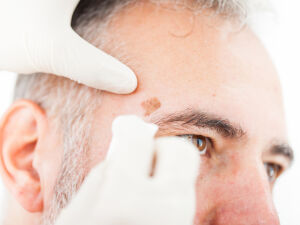Age Spots : As people age, unsightly blemishes – commonly called age spots – can appear on the face and on the back of the hands. The spots – also called lentigines, lentigos or liver spots – are sharply defined, rounded, brown or black, flat patches of skin.
Why treat age spots
- Physical, emotional and social reasons for treating age spots include:
- Improved appearance.
- Enhanced self-esteem.
- Promotion of better skin health.
What you need to know
- Age spots occur when the top surface layer of skin expands with more pigment and develops what looks like a large freckle. One may appear by itself, or a few may be clustered together.
- Some people have a hereditary predisposition to age spots. Age spots may develop at an early age, even in childhood, though they are more common in older people, especially in those who have spent too much time in the sun.
- Age spots are not cancerous, nor do they lead to cancer. However, on skin exposed to the sun, they may be accompanied by precancerous scaly, red elevations called actinic keratoses. Dark spots, which may be cancerous, may also appear to be lentigines. All of these blemishes should be evaluated by a dermatologic surgeon.
Do’s and Don’ts
Do…
- Avoid excessive sun exposure.
- Have age spots evaluated by a doctor.
Don’t…
- Smoke.

